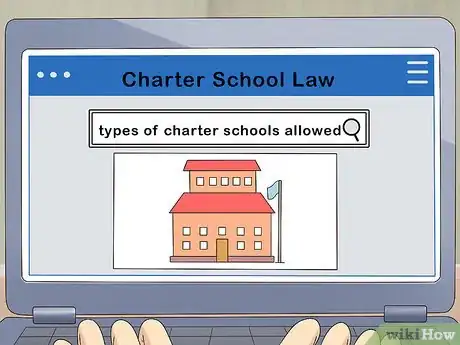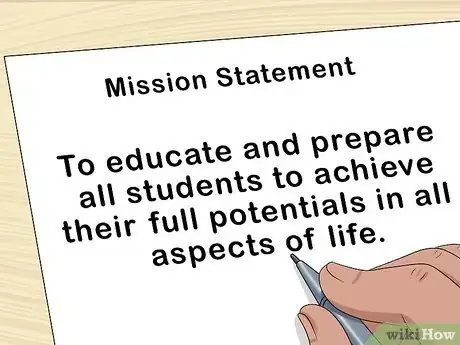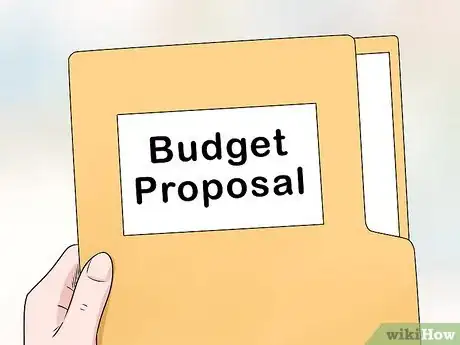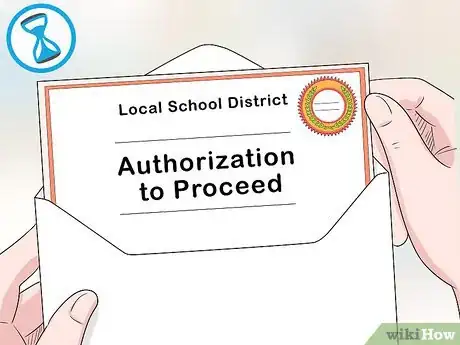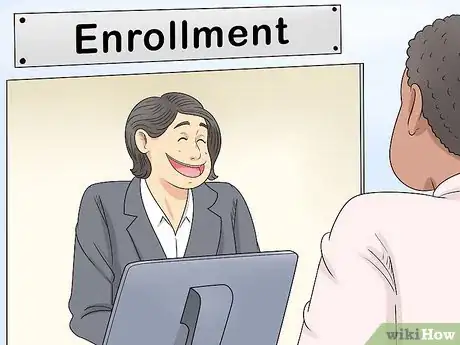This article was co-authored by wikiHow Staff. Our trained team of editors and researchers validate articles for accuracy and comprehensiveness. wikiHow's Content Management Team carefully monitors the work from our editorial staff to ensure that each article is backed by trusted research and meets our high quality standards.
There are 10 references cited in this article, which can be found at the bottom of the page.
wikiHow marks an article as reader-approved once it receives enough positive feedback. In this case, 97% of readers who voted found the article helpful, earning it our reader-approved status.
This article has been viewed 89,478 times.
Learn more...
Charter schools are public schools that are run independently from the local school district, but are still required to follow and meet local and state academic standards. These schools are publicly funded by the states they operate in, and they must comply with regular performance reviews.[1] Charter schools provide students with innovative approaches to teaching and learning, and provide parents with a different educational option for their children within the public school system. Not all states allow charter schools, and those that do require that certain guidelines be met by the schools. Learning how to start a charter school in your community can help give your children an alternative, cutting-edge option for education.
Steps
Complying with Charter School Laws
-
1Check the legality of charter schools. Because charter schools are funded by the states they operate in, each state must pass legislation to determine the legality of opening and operating a charter school there. If you're interested in starting a charter school, you will first need to determine whether charter schools are permitted in your state. As of January 2016, the majority of states and the District of Columbia have passed laws that allow charter schools to operate. The states in the U.S. that do not currently permit charter schools include:
- Kentucky
- Montana
- Nebraska
- North Dakota
- South Dakota
- Vermont
- West Virginia
- Washington - though charter schools were initially approved by state legislation, the state Supreme Court ruled in late 2015 that charter schools are unconstitutional.[2]
-
2Check for capacity limits. Of the states that do permit charter schools, approximately half put caps on how many charter schools can operate within that state. Depending on where you live, you may be ineligible to open a charter school due to capacity limits, even if charter schools are generally allowed in your state.[3]
- The states which currently do not have caps in place are Alaska, Arizona, Colorado, Delaware, Florida, Georgia, Hawaii, Indiana, Iowa, Kansas, Louisiana, Maryland, Minnesota, Nevada, New Jersey, North Carolina, Oregon, South Carolina, Tennessee, Virginia, and Wyoming.
- If you live in a state that is not listed, there may be limitations on how many charter schools may legally operate within the state. However, it is still possible that your state may not have reached its capacity. Search online for charter school laws in your state to see if you can start a charter school in your region.
Advertisement -
3Determine if new schools are allowed. In addition to setting limits on the number of charter schools permitted, some states have laws that set limits on the types of charter schools allowed. That means that there may be restrictions on new start-up schools, public school conversions, and/or virtual schools.[4]
- There are currently 31 states and Washington, DC, that allow for a variety of public charter school types. Those states are: Alaska, Arizona, Arkansas, California, Colorado, Connecticut, District of Columbia, Florida, Georgia, Hawaii, Idaho, Illinois, Indiana, Iowa, Kansas, Louisiana, Maine, Minnesota, Mississippi, Missouri, New Hampshire, North Carolina, Ohio, Oklahoma, Oregon, Pennsylvania, South Carolina, Texas, Utah, Wisconsin, and Wyoming.
Planning Your Charter School
-
1Assess your level of commitment. Starting a charter school is no easy task. It will take a lot of time and energy, and it will almost certainly be frustrating at times. Before you actually begin the process of starting a charter school, you should decide whether or not you'll be able to stick with the project, attend meetings, and work with other people to bring your vision to life.[5]
- You'll probably need to put together a big team to actually make your charter school happen. Think about the set of skills you'll need to pull everything together: real estate experience, financial expertise, operations/management skills, leadership abilities, and educational instructors. Are you willing and able to work with such a large, diverse group of people?
- Planning for your charter school will most likely take at least a year, and may take considerably longer. You'll also need time to build a new facility or modify an existing one, depending on where you decide to open your charter school. Will you still have the same passion and patience for this project in a year (or longer)?
-
2Come up with a concept. The main reason for starting a charter school should ultimately be to provide your community with an educational opportunity that does not currently exist. Think about what aspects of a well-rounded education are missing from your children's current public school options, and think about ways to incorporate those points into your potential charter school.[6]
- Think about what could realistically be taught in public school curriculum, but isn't. You will have to stick to your state's standards of education, of course, but what could be done differently while still adhering to those standards?
- One successful charter school concept in an area with a large population of Chinese families was to incorporate Mandarin Chinese language lessons into the curriculum.[7] Can you think of similar ways to provide relevant academic opportunities for the students in your community?
-
3Write a mission statement. Once you have a clear idea of your charter school's concept, start working on drafting a mission statement. You'll need to be able to outline your vision to your state's Department of Education (or equivalent), so work on creating a clear, pragmatic mission and purpose.[8]
- Your mission statement should be clear and concise. You'll need to relate most of your school's administrative decisions to its mission and core values, so the clearer and more specific you are, the easier it will be to put your mission into action.[9]
- Ask yourself what the best, most ideal public school education would look like. Then start brainstorming a list of defining characteristics, and use these to generate the basic components of your mission statement.
- The mission statement should describe your charter school's purpose, as well as your goals/aspirations for the school (what you intend to accomplish).
- Consider explicitly incorporating a set of core beliefs into your mission statement. This can help guide you as you craft your mission statement, and may be useful for future evaluations of your school's performance.
-
4Establish your governance. Before you can actually start the paperwork to enact your idea for a charter school, you'll need a board of governance. You'll need to decide both who is on the board and how that board will function. This is a vital part of any successful charter school, as approximately 27% of all new charter schools were disrupted by internal conflicts within the board.[10]
- The people you select for your board should understand the mission you've outlined, and they should be fully dedicated to that mission.
- Get to know the people you're considering for your board, and see if their values and beliefs align with yours (and your charter's).
- Most successful charter school boards have between 7 and 11 members, where each member significantly contributes some specific skill set to the board.
- Some important areas of expertise to try to incorporate in your board include finance/accounting, real estate, facilities management, legal services, human resource services, fundraising and marketing, community partnerships, and academic programming.
- Think about where your own weaknesses lie (and be honest with your self-assessment), then look for potential board members who can strengthen the board with their strengths and expertise.
- Consider splitting your team up into sub-committees who can work on assigned aspects of research and planning based on the members' areas of expertise.
- Don't forget that the role of the board is to govern your charter school, and not manage it. Governance involves creating goals for the school, setting metrics to measure the school's process, evaluate the school, approve the budget, create policies, engage in fundraising, and enforce local and state charter laws.
-
5Set a budget. The budget will help determine how your money is spent within the charter school. The governing board members should have a considerable voice in determining the budget, both in terms of how to raise funds as well as how to use those funds.
- Keep your mission statement in mind as you develop your budget. Are you holding your future students' best interests in mind at all times?
- Work with an accountant or financial planner to develop a budget proposal for the first year of operation, as well as a long-range budget plan that will cover the first three to five years of operation. You'll also need a detailed cash-flow projection for every year of operation.
- Have your board review and approve the budget and projections you develop on an annual basis.
-
6Choose a location. The facilities in which you build and operate your charter school could make or break your charter's chances of success. It's seldom as easy as finding a spot and signing the lease. Finding and securing a facility for a charter school often requires some degree of compromise and innovation.
- Try to search for potential facilities within a central location that will be convenient for your prospective students and their parents.
- Property that used to house a school may be an ideal location, but finding an old school building in good condition can be difficult. Some charters operate out of converted retail spaces, while others rely on multi-use facilities to share the space and resources with other schools or businesses.
- Don't put a downpayment on any property until you know that your charter application is accepted. But that doesn't mean don't think about it at all yet - in fact, having a potential place lined up might help strengthen your application.
-
7Develop your petition. In addition to a mission statement and board of governance, you'll need to develop a charter petition. This functions similarly to a business plan for a prospective business. It can span hundreds of pages and require extensive research.[11]
- The charter petition should include your vision and mission for the school, as well as the school's curriculum design, hiring practices, predicted facilities/location, and communication structure.
- It can be very helpful to speak with other charter schools, both in your region and across the country. The board members at these established charter schools can help guide you with their own experience, and may be able to offer suggestions you would not have considered.
- Conduct your research in both legal requirements and functional practices of successful charter schools. You can find some of this information online, but for other aspects of research you may need to speak directly with board members at existing schools.
Starting Your Charter School
-
1Visit your state's Department of Education website. Because charter school laws vary so much from one state to another, it's important to know your state's specific guidelines, deadlines, and regulations. There is no single compendium, unfortunately, so you'll need to learn about the particular forms, applications, and their deadlines required in your state.
- You can search online for your state's Department of Education website, or you can search for your state's charter school application process.
- Pay close attention to all relevant deadlines, as these will most likely be unique to charter schools in your state.
- Familiarize yourself and your board with all aspects of your state's charter school legislation. Some states require the applicants to exhibit a working knowledge of their state's legislated requirements, purpose, and objectives.
-
2Draft and submit a letter of intent. Depending on your state's guidelines and requirements, you may need to write and submit a letter of intent. Depending on where you live, you may need to submit your materials to your local school district, your state's Department of Education, or to your state's Charter School Office (if such an office exists in your state). The letter of intent should outline the planning and design you've worked on thus far, and should identify the board members you've chosen to establish and operate your proposed charter school.[12] A successful charter school letter of intent should include, but may not be limited to:
- applicant information
- founding group/board of directors, along with each individual's role and qualifications
- proposal history (if relevant)
- the name of your proposed charter school
- the prospective location - not the address, but simply the school district your charter will fall in, and any specific neighborhood(s) you've identified as a promising location
- planned grades and estimated enrollment
- any partner organizations you've lined up
- your school's mission statement
- an overview of how your school will live up to its mission statement
- the target population you hope your school will appeal to
- diversity initiatives for your charter school
- public outreach initiatives and community support for your proposed charter school
-
3Wait for approval. Once your materials are submitted, you'll need to wait for authorization to proceed with your school. Most charter schools are authorized by the local school district, but if the school district denies your application you can appeal that decision to the county, and then to the state.[13] Common reasons for a denied application include:
- an unsound educational program
- a concern over the petitioners' inability to successfully implement the school program they've designed
- a failure to address the conditions or guidelines set out for charter schools in your town, county, or state
- a failure to meet the educational requirements of schools in your district, county, or state
-
4Hire faculty and staff. If your charter school is approved, you'll need teachers, administrators, and facility managers. You may want to consider alumni of alternative teaching programs like Teach for America, or turn to online job listings.[14]
- Have teaching applicants teach a sample lesson as part of the interview process. This will give you a good look at how that applicant actually performs in the classroom.
- Follow up on all job references, and pay close attention to each candidate's job history. Look for any dismissals and find out why that applicant was terminated from his position.
- Do a basic online search to see if each individual has a public social media account. This may give you some insight into the applicant's personality and ethics.
- Work with local law enforcement to conduct a background check.
- Most new charter school startups have a high turnover rate. If a teacher you hire isn't working out, don't wait five years before finding a replacement. Similarly, don't feel hurt if your teachers don't stick around for more than a year or two. Anticipate turnover from both your employees and from you and your board as the employers.
-
5Open for enrollment. Once you've been approved for operations and you've hired a strong faculty and staff, you're ready to open for enrollment. Remember that you may be bound to certain class size restrictions and other regulations, and always keep your charter school's mission statement at the forefront of all operations.
-
6Monitor progress at all levels. The only way to measure success is to monitor the progress (or lack thereof) of your school. Many education boards choose to work with an agency like Measures of Academic Progress (MAP).[15] MAP can assess schools nationwide on a regular basis and provide you with a personalized assessment of your school's ranking, your students' progress, and your students' potential for growth. These results are often delivered within 24 hours, allowing you to keep on top of your your educators' effectiveness and your students' learning progress.[16]
Community Q&A
-
QuestionCan I start a charter school and be both a teacher and administrator?
 Community AnswerMany higher learning institutions have administrators who actually teach in their educational field of study.
Community AnswerMany higher learning institutions have administrators who actually teach in their educational field of study.
Warnings
- Although charter schools are publicly funded through enrollment, you may need additional funding options such as grants, loans or private donations.⧼thumbs_response⧽
- Charter schools are held accountable for student achievement based on state and district requirements. A charter school will be closed if it does not perform well based on those standards.⧼thumbs_response⧽
- Not all states have laws that allow you to establish charter schools.⧼thumbs_response⧽
References
- ↑ http://www.charterschoolcenter.org/what-is-a-charter-school
- ↑ http://www.seattletimes.com/seattle-news/education/state-supreme-court-charter-schools-are-unconstitutional/
- ↑ http://www.publiccharters.org/wp-content/uploads/2015/01/model_law_2015.pdf
- ↑ http://www.publiccharters.org/wp-content/uploads/2015/01/model_law_2015.pdf
- ↑ http://www.foxbusiness.com/features/2013/10/16/thinking-about-starting-charter-school-heres-how.html
- ↑ https://my.vanderbilt.edu/marisacannata/files/2013/10/Starting_Strong_final.pdf
- ↑ http://www.pbs.org/newshour/updates/start-school-one-familys-recipe-startup-success/
- ↑ http://www.masscharterschools.org/start-charter
- ↑ https://my.vanderbilt.edu/marisacannata/files/2013/10/Starting_Strong_final.pdf
- ↑ https://my.vanderbilt.edu/marisacannata/files/2013/10/Starting_Strong_final.pdf
- ↑ http://www.pbs.org/newshour/updates/start-school-one-familys-recipe-startup-success/
- ↑ http://www.p12.nysed.gov/psc/documents/GreatOaksRedacted.pdf
- ↑ http://www.ccsa.org/starting/authorization/
- ↑ https://my.vanderbilt.edu/marisacannata/files/2013/10/Starting_Strong_final.pdf
- ↑ https://my.vanderbilt.edu/marisacannata/files/2013/10/Starting_Strong_final.pdf
- ↑ https://www.nwea.org/assessments/map/
About This Article
Charter schools are public schools that are run independently from the local school district. To start a charter school, first you’ll need to check that charter schools are legal in your state, and if there’s space for another one, since many states only allow so many charter schools. Then, you’ll need to recruit a board of governors to make administrative decisions, find a viable location for your school, and develop a curriculum. Make sure your curriculum includes a unique selling point or concept to set it aside from other schools, such as teaching a particular language or skill. Once you’ve planned the details, you’ll need to write a petition and get approval from your state’s governing board. After you’ve gotten the green light, you can start to build the school, hire staff, and market your school. For more tips, including how to budget for your charter school, read on!


